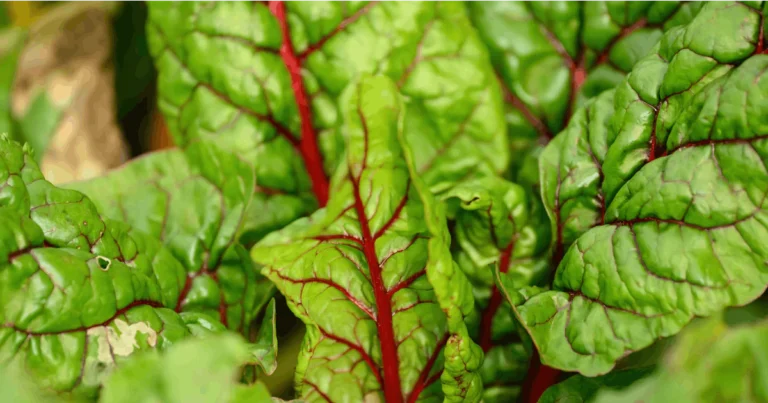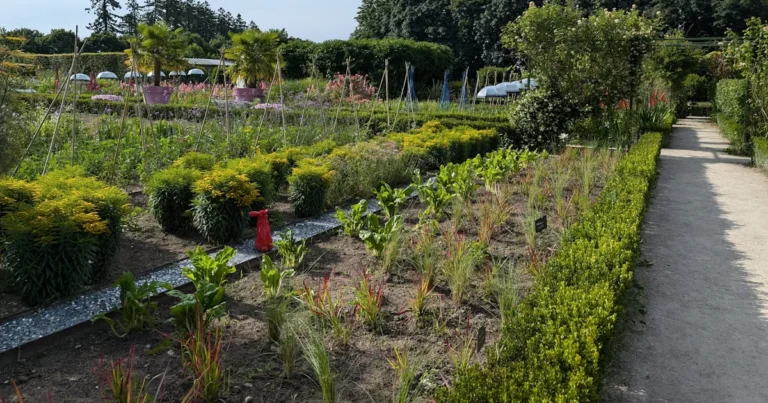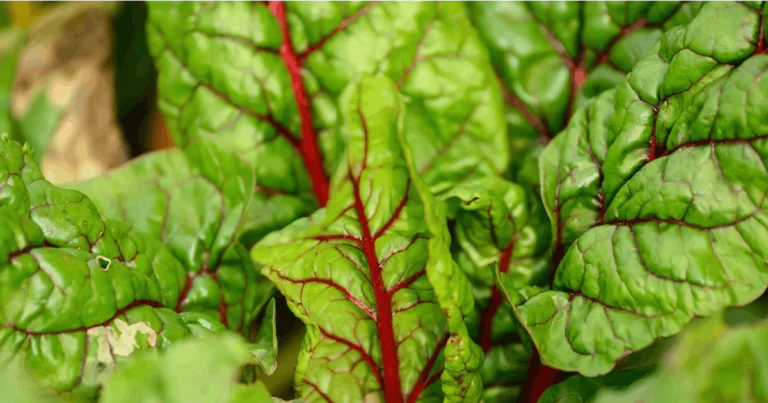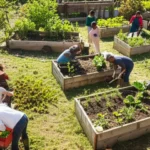Support our educational content for free when you purchase through links on our site. Learn more
Imagine stepping into a vibrant patch of green right in the heart of your California neighborhood—a place where heirloom tomatoes bask in the sun, fragrant lavender sways in the breeze, and neighbors share stories over freshly picked basil. Community gardening in California isn’t just about growing plants; it’s about cultivating connections, resilience, and sustainability in a state known for its diverse climates and environmental challenges. But with so many plant options and regional quirks, how do you choose the right crops to thrive together?
In this comprehensive guide, we’ll unveil the top 15 must-grow plants perfectly suited for California’s unique conditions, share insider tips on sustainable gardening practices, and explore how you can start or enrich your own community garden. Whether you’re battling drought, navigating pests, or dreaming of starting a seed library, we’ve got you covered. Ready to dig in and grow your community? Let’s get started!
Key Takeaways
- California’s diverse climate demands smart plant choices—opt for drought-tolerant natives like California poppies and resilient edibles like heirloom tomatoes and bush beans.
- Sustainable practices such as drip irrigation, mulching, and composting are essential to conserve water and build healthy soil in community gardens.
- Community garden success hinges on collaboration, fair plot management, and shared responsibilities to keep the green space thriving and harmonious.
- Starting a seed library or hosting garden workshops can enrich your community beyond the beds, fostering knowledge sharing and social bonds.
- Prepare for environmental challenges like wildfires and drought by selecting fire-resistant plants and implementing water-wise strategies.
Ready to get your hands dirty?
- 👉 Shop Heirloom Tomato Seeds: Amazon | Etsy
- Explore Drip Irrigation Kits: Amazon | Home Depot
- Find Organic Mulch Options: Amazon | Walmart
Table of Contents
- ⚡️ Quick Tips and Facts
- 🌱 The Golden State’s Green Heart: A Brief History of California Community Gardening
- 💚 Why Dig In? The Myriad Benefits of Community Gardening in California
- ☀️ Sun-Kissed Selections: Choosing the Best Plants for California’s Diverse Climates
- 🥕 Top 15 Must-Grow Plants for Your California Community Garden
- Heirloom Tomatoes (Solanum lycopersicum) 🍅
- Zucchini & Summer Squash (Cucurbita pepo) 🥒
- Bell Peppers (Capsicum annuum) 🌶️
- Leafy Greens (Lettuce, Kale, Swiss Chard) 🥬
- Bush Beans (Phaseolus vulgaris) 🌱
- Strawberries (Fragaria x ananassa) 🍓
- Rosemary (Salvia rosmarinus) 🌿
- Basil (Ocimum basilicum) 🍃
- California Poppies (Eschscholzia californica) 🧡
- Sunflowers (Helianthus annuus) 🌻
- Marigolds (Tagetes spp.) 🌼
- Citrus Trees (Dwarf Varieties) 🍊
- Artichokes (Cynara cardunculus var. scolymus) 💜
- Garlic (Allium sativum) 🧄
- Lavender (Lavandula spp.) 💜
- 💧 Sustainable Sowing: Eco-Friendly Practices for California Community Gardens
- 🚧 Navigating the Golden State’s Green Hurdles: Common Challenges and Solutions
- 🤝 Plotting Your Success: Essential Tips for Community Garden Management & Etiquette
- 🏡 From Dream to Green: How to Start a Thriving Community Garden in California
- 📚 Beyond the Beds: Enriching Your Community Through Garden Initiatives
- 🔥 Cultivating Resilience: Protecting Your California Community Garden from Environmental Challenges
- 🎉 Harvesting Success: Celebrating a Year of Growth & Looking Ahead
- ✅ Conclusion
- 🔗 Recommended Links
- ❓ FAQ
- 📚 Reference Links
Quick Tips and Facts
Check out our article about Community gardening plants to learn more about the best plants for your garden. Community gardening in California is a great way to grow your own food, meet new people, and give back to your community. According to the American Community Gardening Association, community gardens can help reduce urban blight, improve air quality, and increase food security. If you’re interested in learning more about the benefits of community gardens, check out our category on Benefits of Community Gardens.
Getting Started
To get started with community gardening in California, you’ll need to find a garden near you. You can search for community gardens in your area on the American Community Gardening Association website or check out our category on Community Garden Events to find events and workshops in your area.
The Golden State’s Green Heart: A Brief History of California Community Gardening
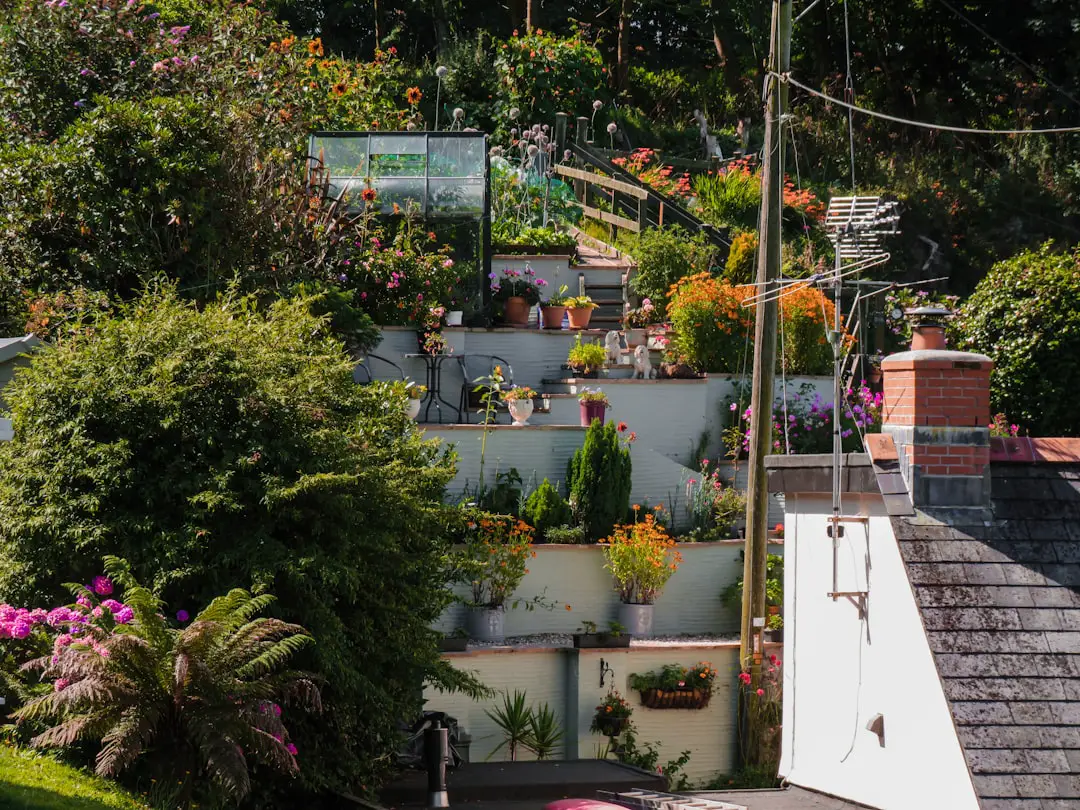
California has a long history of community gardening, dating back to the Victory Gardens of World War II. Today, community gardens can be found in cities and towns all across the state, from Los Angeles to San Francisco. According to the Los Angeles Community Garden Council, community gardens are “hubs of resilience, embodying values of ecology, justice, and healthy living.” If you’re interested in learning more about community garden policies, check out our category on Community Garden Policies.
Historical Context
Community gardens have been around for decades, but they’ve gained popularity in recent years as people become more interested in sustainable living and local food systems. In California, community gardens are not only a great way to grow your own food, but also a way to connect with your community and give back. For example, the Main Street Community Garden in Santa Monica is one of the oldest and largest community gardens in the state, and it’s a great example of how community gardens can bring people together.
Why Dig In? The Myriad Benefits of Community Gardening in California
Community gardening in California offers a wide range of benefits, from improved physical health to increased community engagement. According to the California Department of Public Health, community gardens can help reduce the risk of obesity, diabetes, and heart disease. Additionally, community gardens can provide a sense of community and belonging, which is especially important for people who live in urban areas. If you’re interested in learning more about garden design ideas, check out our category on Garden Design Ideas.
Physical Health Benefits
Community gardening can be a great way to get exercise and fresh air, which can help improve your overall physical health. Additionally, community gardens can provide access to fresh, healthy produce, which can help reduce the risk of chronic diseases like heart disease and diabetes. For example, the Brooks Park Community Garden in San Francisco offers a variety of edible plants, including fruits, vegetables, and herbs.
Sun-Kissed Selections: Choosing the Best Plants for California’s Diverse Climates
California’s diverse climate means that different plants thrive in different parts of the state. According to the USDA Plant Hardiness Zone Map, California has a range of hardiness zones, from 5 to 11. When choosing plants for your community garden, it’s essential to consider the climate, soil type, and amount of sunlight your garden receives. If you’re interested in learning more about edible plants, check out our category on Edible Plants.
Understanding California’s USDA Hardiness Zones
California’s hardiness zones range from 5 to 11, with the coolest temperatures found in the mountains and the warmest temperatures found in the desert. When choosing plants, it’s essential to consider the hardiness zone of your garden and select plants that are drought-tolerant and resistant to pests and diseases. For example, the California Poppy is a great choice for gardens in hardiness zones 8-11, as it’s drought-tolerant and attracts pollinators.
Top 15 Must-Grow Plants for Your California Community Garden
Here are 15 must-grow plants for your California community garden:
- Heirloom Tomatoes (Solanum lycopersicum) 🍅: A classic choice for any garden, heirloom tomatoes are easy to grow and delicious.
- Zucchini & Summer Squash (Cucurbita pepo) 🥒: These versatile vegetables are easy to grow and can be used in a variety of dishes.
- Bell Peppers (Capsicum annuum) 🌶️: Bell peppers are sweet and crunchy, and can be grown in a variety of colors.
- Leafy Greens (Lettuce, Kale, Swiss Chard) 🥬: Leafy greens are nutritious and easy to grow, and can be harvested in as little as 20 days.
- Bush Beans (Phaseolus vulgaris) 🌱: Bush beans are easy to grow and can be harvested in as little as 50 days.
- Strawberries (Fragaria x ananassa) 🍓: Strawberries are sweet and delicious, and can be grown in containers or in the ground.
- Rosemary (Salvia rosmarinus) 🌿: Rosemary is a fragrant and versatile herb that can be used in a variety of dishes.
- Basil (Ocimum basilicum) 🍃: Basil is a classic and delicious herb that’s easy to grow.
- California Poppies (Eschscholzia californica) 🧡: California poppies are drought-tolerant and attract pollinators, making them a great choice for California gardens.
- Sunflowers (Helianthus annuus) 🌻: Sunflowers are tall and stunning, and can be grown in a variety of sizes.
- Marigolds (Tagetes spp.) 🌼: Marigolds are bright and cheery, and can be grown in a variety of colors.
- Citrus Trees (Dwarf Varieties) 🍊: Dwarf citrus trees are compact and productive, making them a great choice for small gardens.
- Artichokes (Cynara cardunculus var. scolymus) 💜: Artichokes are delicious and unique, and can be grown in hardiness zones 8-11.
- Garlic (Allium sativum) 🧄: Garlic is easy to grow and can be used in a variety of dishes.
- Lavender (Lavandula spp.) 💜: Lavender is fragrant and beautiful, and can be used in a variety of crafts and recipes.
Sustainable Sowing: Eco-Friendly Practices for California Community Gardens
Community gardens in California can be a great way to reduce your carbon footprint and live more sustainably. According to the California Department of Food and Agriculture, community gardens can help reduce greenhouse gas emissions and conservation of water. Here are some eco-friendly practices to consider:
- Composting: Composting is a great way to reduce waste and create nutrient-rich soil. You can compost food scraps, yard waste, and manure.
- Drip Irrigation: Drip irrigation is a great way to conserve water and reduce evaporation. You can use drip irrigation systems or soaker hoses to deliver water directly to the roots of your plants.
- Mulching: Mulching is a great way to retain moisture and suppress weeds. You can use organic mulch like wood chips or straw to mulch your garden.
Water-Wise Wonders: Drip Irrigation & Mulching
Drip irrigation and mulching are two great ways to conserve water and reduce evaporation in your community garden. According to the USDA, drip irrigation can help reduce water usage by up to 50%. You can use drip irrigation systems or soaker hoses to deliver water directly to the roots of your plants. Additionally, you can use organic mulch like wood chips or straw to mulch your garden and retain moisture.
Navigating the Golden State’s Green Hurdles: Common Challenges and Solutions
Community gardening in California can be challenging, especially when it comes to drought, pests, and diseases. According to the University of California, community gardens can be vulnerable to climate change, which can lead to drought, heatwaves, and wildfires. Here are some common challenges and solutions:
- Drought: Drought is a major challenge for community gardens in California. To combat drought, you can use drip irrigation, mulch, and drought-tolerant plants.
- Pests: Pests can be a major challenge for community gardens in California. To combat pests, you can use organic pest control methods like neem oil and diatomaceous earth.
- Diseases: Diseases can be a major challenge for community gardens in California. To combat diseases, you can use organic disease control methods like copper and sulfur.
Drought Management: Every Drop Counts
Drought management is essential for community gardens in California. According to the California Department of Water Resources, community gardens can help reduce water usage by up to 50%. You can use drip irrigation, mulch, and drought-tolerant plants to combat drought. Additionally, you can use rainwater harvesting and greywater systems to collect and reuse water.
Plotting Your Success: Essential Tips for Community Garden Management & Etiquette
Community garden management and etiquette are essential for a successful and harmonious community garden. According to the American Community Gardening Association, community gardens can be a great way to build community and foster relationships. Here are some essential tips:
- Communication: Communication is key to a successful community garden. You can use email, social media, and meetings to communicate with your fellow gardeners.
- Respect: Respect is essential for a harmonious community garden. You can respect your fellow gardeners by following rules, cleaning up after yourself, and being considerate of others.
- Maintenance: Maintenance is essential for a successful community garden. You can maintain your garden by watering, weeding, and pruning.
Fair Plot Allocation & Maintenance Agreements
Fair plot allocation and maintenance agreements are essential for a successful community garden. According to the Los Angeles Community Garden Council, community gardens can be a great way to build community and foster relationships. You can allocate plots fairly by using a lottery system or assigning plots based on need. Additionally, you can create maintenance agreements by outlining responsibilities and setting expectations.
From Dream to Green: How to Start a Thriving Community Garden in California
Starting a community garden in California can be a rewarding and challenging experience. According to the California Department of Food and Agriculture, community gardens can help reduce greenhouse gas emissions and conservation of water. Here are some steps to follow:
- Find a location: Find a location that is accessible, visible, and has good soil.
- Build a team: Build a team of dedicated gardeners who share your vision.
- Create a plan: Create a plan that includes goals, objectives, and strategies.
- Secure funding: Secure funding by applying for grants, hosting fundraisers, and seeking donations.
Finding the Perfect Patch: Land Acquisition & Zoning
Finding the perfect patch of land is essential for a successful community garden. According to the University of California, community gardens can be a great way to build community and foster relationships. You can find a location by searching online, asking around, and visiting potential sites. Additionally, you can check zoning laws and land use regulations to ensure that your garden is allowed in the area.
Beyond the Beds: Enriching Your Community Through Garden Initiatives
Community gardens can be a great way to enrich your community and foster relationships. According to the American Community Gardening Association, community gardens can be a great way to build community and promote social justice. Here are some initiatives to consider:
- Workshops: Workshops can be a great way to educate and engage your community. You can host workshops on gardening techniques, sustainability, and nutrition.
- Events: Events can be a great way to bring people together and celebrate your garden. You can host events like harvest festivals, potlucks, and garden tours.
- Partnerships: Partnerships can be a great way to collaborate and leverage resources. You can partner with local organizations, schools, and businesses to support your garden.
Sowing Knowledge: How to Start a Seed Library in Your Community Garden
Starting a seed library can be a great way to share knowledge and promote sustainability in your community garden. According to the Seed Library, seed libraries can be a great way to conserve biodiversity and support local food systems. You can start a seed library by collecting seeds, creating a catalog, and establishing rules.
Cultivating Resilience: Protecting Your California Community Garden from Environmental Challenges
Community gardens in California can be vulnerable to environmental challenges like drought, wildfires, and climate change. According to the University of California, community gardens can be a great way to build resilience and promote sustainability. Here are some strategies to consider:
- Drought tolerance: Drought tolerance can be achieved by using drought-tolerant plants, mulching, and conserving water.
- Fire resistance: Fire resistance can be achieved by creating defensible space, using fire-resistant materials, and having a fire plan.
- Climate resilience: Climate resilience can be achieved by using climate-resilient plants, promoting biodiversity, and supporting local food systems.
Wildfire Preparedness for Gardeners
Wildfire preparedness is essential for community gardens in California. According to the California Department of Forestry and Fire Protection, community gardens can be a great way to reduce wildfire risk and promote fire safety. You can prepare for wildfires by creating defensible space, using fire-resistant materials, and having a fire plan. Additionally, you can stay informed about wildfire risk and take action to protect your garden.
Harvesting Success: Celebrating a Year of Growth & Looking Ahead
Celebrating your successes and looking ahead to the future is essential for a successful community garden. According to the American Community Gardening Association, community gardens can be a great way to build community and foster relationships. You can celebrate your successes by hosting events, sharing stories, and reflecting on your progress. Additionally, you can look ahead to the future by setting goals, creating a plan, and seeking support.
Conclusion
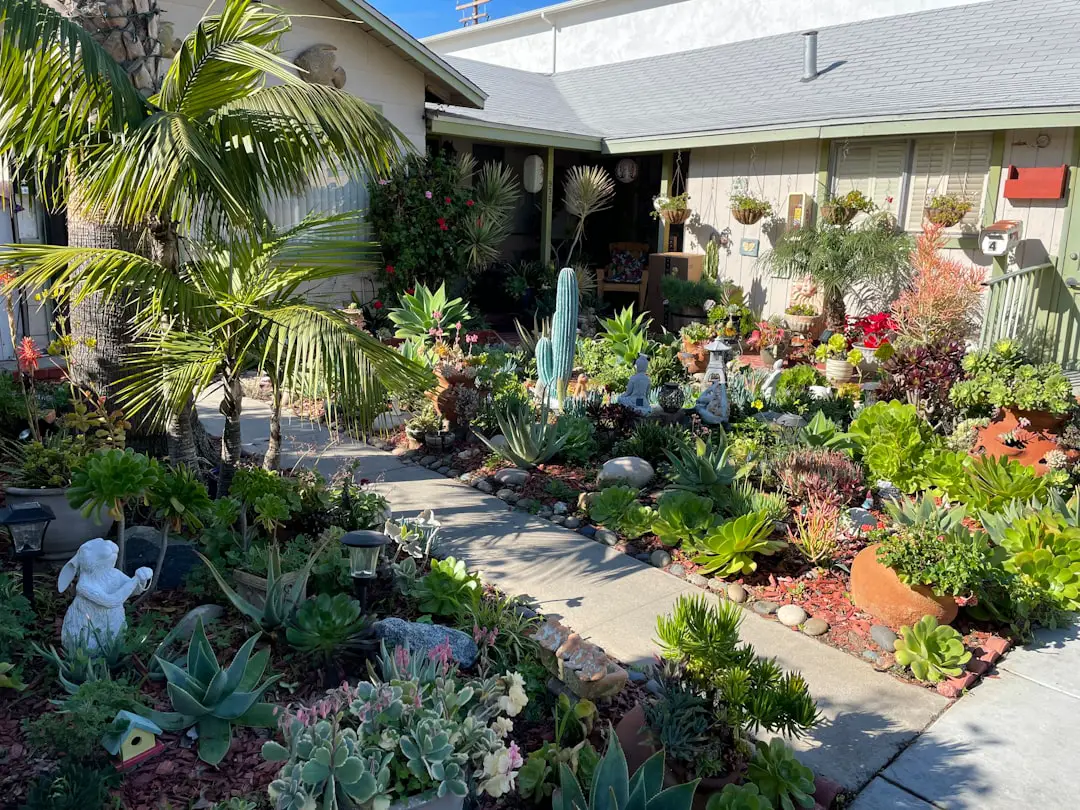
Community gardening in California is more than just planting seeds—it’s about growing connections, building resilience, and nurturing the environment. From the sun-drenched coastlines to the inland valleys, the diversity of California’s climate offers a playground for gardeners to experiment with a rich variety of plants, especially those that are drought-tolerant and native. Whether you’re a seasoned green thumb or just starting out, community gardens provide an incredible opportunity to learn, share, and flourish together.
We’ve walked you through everything from the best plants to grow (hello, heirloom tomatoes and California poppies!) to sustainable gardening practices and navigating common challenges like drought and pests. Remember, the secret sauce to a thriving community garden lies in collaboration, respectful management, and embracing the local ecosystem.
If you’ve been wondering how to start your own garden or enrich an existing one, the steps are clear: find your patch, build your team, plan thoughtfully, and engage your community. And don’t forget to celebrate your harvests and milestones—they’re the fruits of your labor in more ways than one!
So, what’s stopping you? Dive in, get your hands dirty, and watch your community—and your garden—blossom. 🌻
Recommended Links
Ready to gear up for your California community garden adventure? Here are some top picks for tools, seeds, and resources to get you growing:
- Heirloom Tomato Seeds:
Amazon | Etsy - Drip Irrigation Kits:
Amazon | Home Depot - Organic Mulch (Wood Chips, Straw):
Amazon | Walmart - Composting Bins:
Amazon | Home Depot - Books on Community Gardening:
FAQ
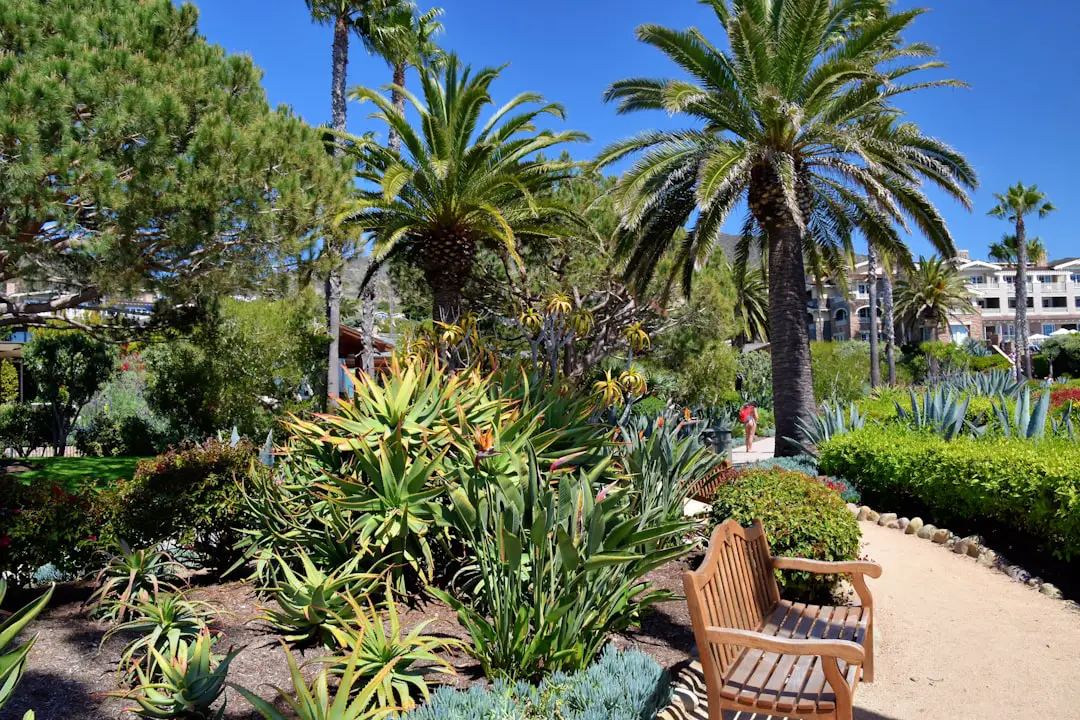
What are the best drought-tolerant plants for community gardens in California?
Top Picks for Water-Wise Gardens
Drought-tolerant plants are essential in California’s often dry climate. Some of the best include California poppies (Eschscholzia californica), lavender (Lavandula spp.), rosemary (Salvia rosmarinus), and artichokes (Cynara cardunculus var. scolymus). These plants thrive with minimal water once established and help conserve precious resources. Native plants are particularly well-adapted to local conditions and support native pollinators, making them a win-win for sustainability and biodiversity.
How can I get involved in a community garden in my local California neighborhood?
Steps to Join and Engage
Start by searching for existing community gardens near you via local government websites, community centers, or platforms like the American Community Gardening Association. Many gardens have waitlists or volunteer opportunities. Reach out to garden coordinators, attend open hours or events, and consider volunteering to build relationships. If no garden exists nearby, consider starting your own by gathering interested neighbors, finding a suitable plot, and navigating local regulations.
Read more about “How to Start a Sustainable Community Garden: 10 Essential Steps 🌱 …”
What are some easy-to-grow and low-maintenance plants suitable for beginners in community gardens in California?
Beginner-Friendly Garden Stars
For beginners, plants like bush beans, lettuce, zucchini, basil, and garlic are excellent choices. They require minimal fuss, grow quickly, and provide rewarding harvests. These plants tolerate a range of soil types and climates, making them perfect for community gardens where gardeners might have varying experience levels.
What are the benefits of community gardening for the environment and local communities in California?
Environmental and Social Perks
Community gardens help reduce urban heat islands, improve air quality, and increase green space, which supports local wildlife and pollinators. Socially, they foster community cohesion, provide educational opportunities, and improve food security by offering access to fresh, nutritious produce. According to the SNAC Community Gardens Initiative, these gardens also promote health equity and environmental justice, making them vital assets in California’s urban and rural landscapes.
Reference Links
- Los Angeles Community Garden Council
- California Department of Food and Agriculture
- University of California Agriculture and Natural Resources
- American Community Gardening Association
- USDA Plant Hardiness Zone Map
- California Department of Water Resources
- California Department of Forestry and Fire Protection
- Seed Library
- SNAC Community Gardens Initiative

